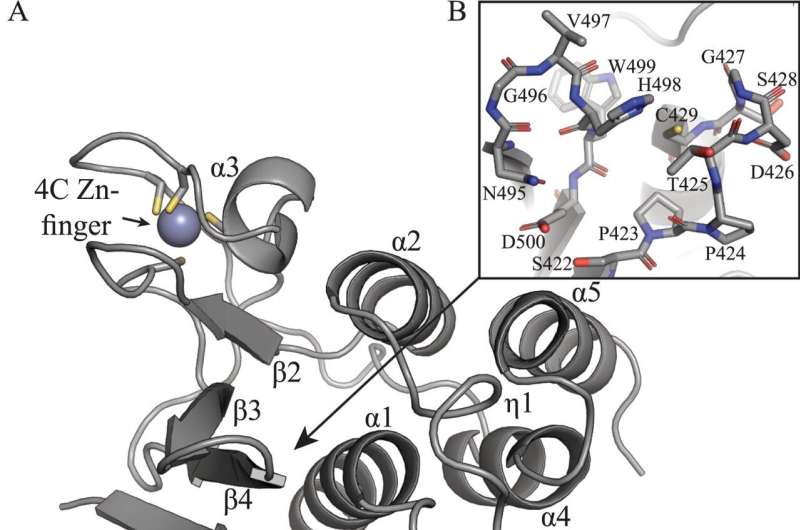This article has been reviewed according to Science X's editorial process and policies. Editors have highlighted the following attributes while ensuring the content's credibility:
fact-checked
peer-reviewed publication
trusted source
proofread
Q&A: Pork, pathogens and progress—a close look at PRRSV research

The pork industry provides people across different cultures a considerable source of protein, essential nutrients and a versatile ingredient for diverse culinary traditions. So, when the problem of porcine reproductive and respiratory syndrome virus (PRRSV) infection in the pork industry results in an economic loss of $650 million annually in the United States, finding a solution is of critical significance.
A diverse group of researchers at the Faculty of Science and Leiden University Medical Center, The Netherlands, recently published a paper sharing their discovery on better understanding and managing PRRSV. The following interview is with Dr. Brian Mark, professor at the department of microbiology and dean of the Faculty of Science, who leads a laboratory focused on understanding the molecular basis of diseases.
What key findings emerged from the structural differences between PRRSV PLP2 and EAV, and how could this knowledge contribute to strategies against PRRSV outbreaks?
PRRSV is a viral pathogen of major consequence to the swine industry. It can quickly devastate hog farms as the virus is highly contagious and causes adverse effects to reproductive health and causes respiratory issues in young pigs.
Interestingly, PRRSV belongs to a group of viruses (Nidoviruses) that includes arterivirus (EAV), as well as coronaviruses (SARS-1, -2, MERS etc). These viruses express a similar protein known as a protease whose function is essential to their replication. Not only is the viral protease essential for virus replication, it also actively interferes with the immune response of the infected host cell, helping the virus propagate.
For several years, my laboratory has been engineering a key protease from these viruses to remove its ability to suppress the host immune response. This weakens the virus and provides a strategy to create what is known as an attenuated viral vaccine, which could potentially be used to vaccinate against Nidoviruses.
Interestingly, working in collaboration with Dr. Marjolein Kikkert and her group at the Leiden University Medical Center, The Netherlands, we found that removing the immune evasion function from the protease from SARS-2, MERS, and EAV indeed weakens the ability of these viruses to suppress the immune response of the host.
In contrast, however, removing this function from the PRRSV severely compromised its ability to replicate. This is unlike SARS-2, MERS, and EAV, which could still replicate in cell culture after removing the immune evasion function from their protease.
This discovery has revealed a distinct difference in PRRSV compared to other Nidoviruses, which was a surprise to us and is now published in the journal PLoS Pathogens.
What implications does the result of your research hold for developing antiviral strategies and reducing economic losses in the pork farming industry?
Our work reveals that PRRSV is distinctly different from its relatives regarding how it contends with the host immune response and the role of this protease in its ability to replicate. We provide one more piece to the puzzle that further deepens our understanding of PRRSV and how to manage it.
Could you share the origin of the idea and what motivated the initiation of this research?
The origins of this strategy to remove the immune evasion function from the proteases of Nidoviruses extends back to my original collaboration with Dr. Kikkert's group demonstrating its utility in EAV, which we published in the Proceedings of the National Academy of Sciences in 2013.
At the time my laboratory had determined the 3D structure of the protease from EAV, which revealed to me the possibility of being able to remove its immune evasion function without affecting its ability to participate in its other role in virus replication. We worked with Marjolein's group to test the hypothesis, which was proven true.
More information: Ben A. Bailey-Elkin et al, Demonstrating the importance of porcine reproductive and respiratory syndrome virus papain-like protease 2 deubiquitinating activity in viral replication by structure-guided mutagenesis, PLOS Pathogens (2023). DOI: 10.1371/journal.ppat.1011872
Journal information: PLoS Pathogens , Proceedings of the National Academy of Sciences
Provided by University of Manitoba




















